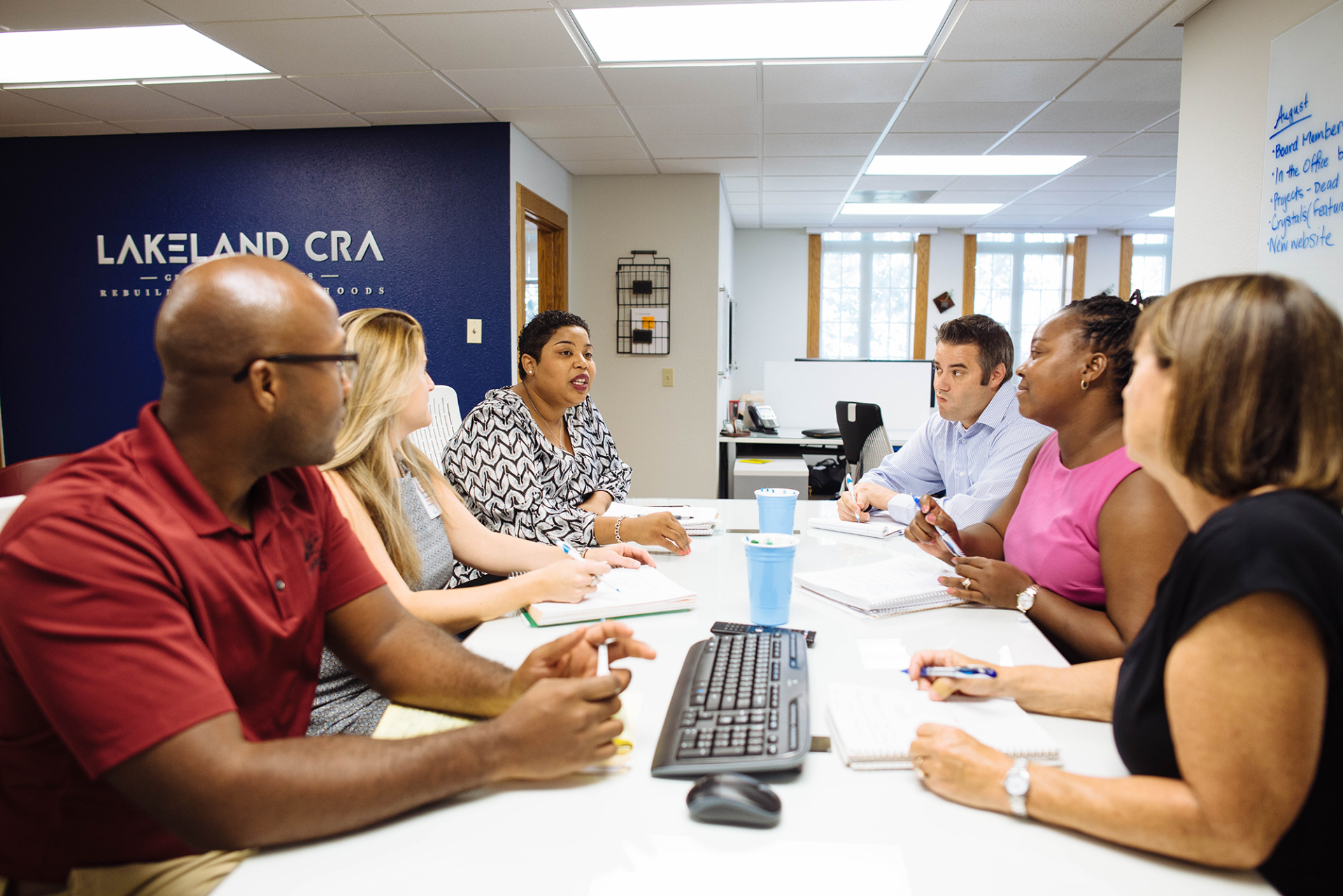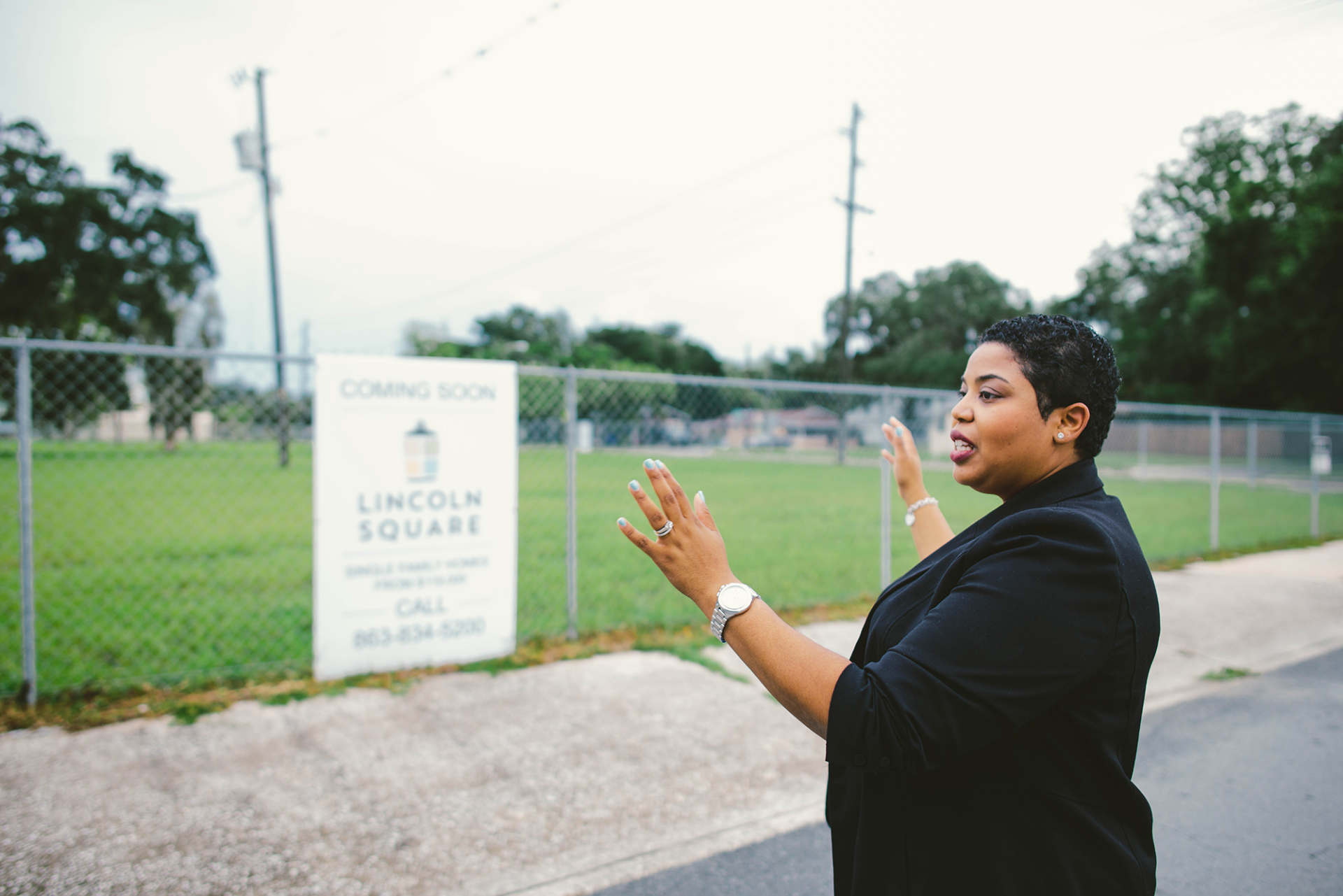The city’s three redevelopment plans focus on increasing the quality of life in the Dixieland, Downtown, and Midtown districts. Meet the woman spearheading this initiative.
Photography by John Kazaklis
A few areas of Lakeland have lagged behind the city’s economic and social vigor. The Lakeland Community Redevelopment Agency’s Nicole Travis tells us how her team is breathing new life into those blighted areas and making them fertile for growth.
The Lakelander: How did you come to this role as redevelopment manager of the Lakeland CRA?
Nicole Travis: I have always had an interest in real estate development, with a bachelor’s degree in architecture and a master’s in business administration. I worked as a project manager for private developers and the City of Tampa Growth Management and Planning department prior to coming to Lakeland. In 2010 an opportunity became available to work in community redevelopment as a project manager, and I was promoted to CRA manager in 2015.

TL: What’s the main charge of the department?
NT: The primary objective of the redevelopment agency is to eliminate blight and prevent recurrence of deteriorating conditions within the City of Lakeland’s three redevelopment areas. Each district has its own unique challenges and opportunities. We encourage private investment, business activity, and job creation within the CRAs.
TL: You mentioned in a previous conversation that you strive to break the conventional image of a government bureaucracy that’s difficult to conduct business with — how are you doing that?
NT: It is often perceived that there is a lot of red tape when doing business with the City of Lakeland even though we are more customer service oriented as an organization than ever before. That doesn’t mean there isn’t room for improvement. We, the CRA team, are conscious of this criticism and recognize that communication and transparency is everything in building relationships. I recognize that we all have different communication styles; my approach is generally direct. However, I try my best to match the style of the customer I am working with. The goal is to know the next steps on how we can get a project to the next milestone. It also helps to have fun communicating with the public via social media. We don’t take ourselves too seriously in the office.

TL: What can you tell us about the community redevelopment projects that are in progress?
NT: Oh my. There are a couple large projects that most people are familiar with: Lincoln Square single-family residential development, the completion of the Mass Market and LCS urban farm project, and the North Lake Mirror 10-acre redevelopment site. There are lots of projects that are smaller in scope and cost, but equally as challenging and time consuming. A number of unopened alleys in the northwest area of Midtown are a nuisance to adjacent property owners because of illegal dumping and overgrowth. We are vacating a few of those alleys to eliminate the abandoned property behind the houses. East Main Street Design District is the center of our CRA brainstorming sessions lately, as we try to attract technology businesses and artisans to the area. Fix-It-Up is a fairly new program that we are offering in two of our districts. This program assists homesteaders with grants for exterior repairs and maintenance. The houses are looking so good!
TL: What’s important about facilitating/encouraging ownership/homesteading?
NT: In Lakeland we have a significant number of rental properties and absent landlords. Homeownership is a critical tool in stabilizing and revitalizing neighborhoods that have suffered from disinvestment. Jane Jacobs wrote a book that I love and refer to often, The Death and Life of Great American Cities. One of the points in the book is the value of having “eyes on the street.” This concept advocates increased street traffic as a deterrent for criminals, thereby creating a safer environment. Homeowners are invested. They want to protect their property values and have peace of mind about where they sleep at night. There is a certain level of pride with homeownership.
TL: What areas are slated for future redevelopment, and how do you choose?
NT: The City of Lakeland has three redevelopment districts and corresponding redevelopment plans. Every project, activity, and initiative that we take on is outlined in the redevelopment plans. We manage over 5,000 acres within the central city. That is a lot of ground to cover, but we focus our efforts on projects and areas throughout the districts to make a greater impact. The CRA team does a great job of listening to the needs of the community and trying to respond accordingly by building partnerships with the private sector, city departments, and other governmental agencies. It’s a difficult job because every acre, every street, every neighborhood needs attention and would benefit from additional resources.

TL: How do you see the Lakeland CRA’s role evolving in the coming years?
NT: I don’t envision the CRA boundaries expanding or any new CRA districts in the near future. The CRA will continue to make a diligent effort to reach the goals outlined in the redevelopment plans of each district. We have accomplished a lot in the past 15 years, but there is so much more to do.
TL: What are some changes you are most eager to see take place through your role in Lakeland?
NT: I wouldn’t say that I am “eager” about the changes I would like to see take place in Lakeland. I am hopeful. Hopeful for continued growth of the community as a place where quality job opportunities, housing, education, and lifestyle are available to all who want to become contributing citizens of this community. Lakeland is a beautiful city, and I am extremely grateful to have the opportunity to serve.
I am hopeful. Hopeful for continued growth of the community as a place where quality job opportunities, housing, education, and lifestyle are available to all who want to become contributing citizens of this community. Lakeland is a beautiful city, and I am extremely grateful to have the opportunity to serve.
TL: If readers want to stay apprised of the Lakeland CRA’s work, how can they do that?
NT: The best way to keep up with our work is via our recently updated Lakeland CRA website and social media. We are making a serious effort to tell our story, which includes our successes and opportunities in redevelopment. The CRA also presents to the City Commission annually about the activity in the three districts. With that presentation, we publish an annual report that highlights the work of the redevelopment agency. And of course, they can always stop by city hall and chat with us. Our doors are always open!
TL: Any final thoughts?
NT: Redevelopment takes time, patience, and dedication. I work with the most incredible team of professionals on the CRA team, and these projects are made a reality because of the partnerships with the various city departments. Redevelopment requires teamwork!
